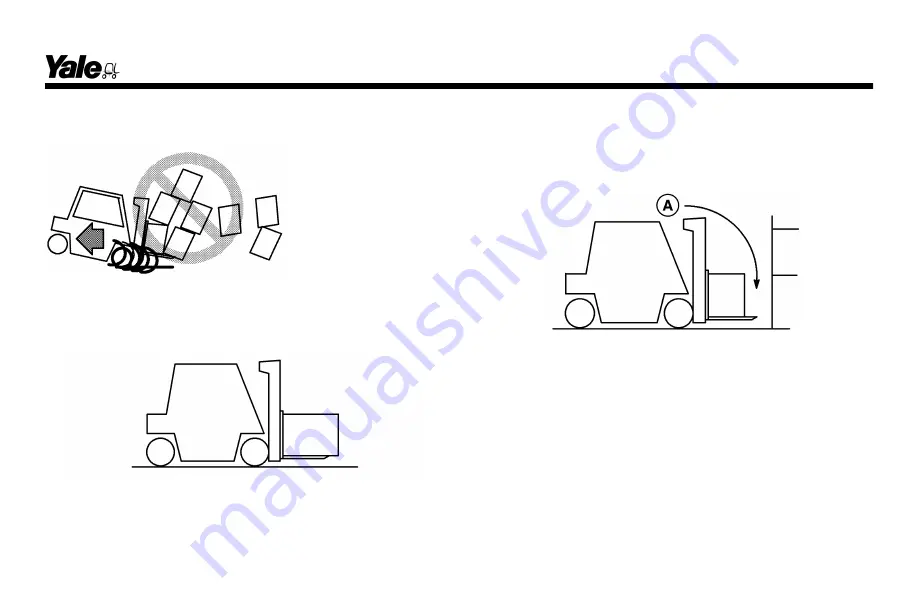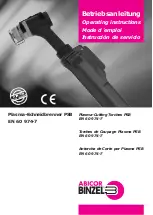
Load Handling, How to Engage and Disengage
a Load
1.
Avoid fast starts.
Sudden movement
can cause the lift truck
to tip. People can be
hurt or killed and mate-
rial can be damaged.
Approach the load
carefully. Make sure that the truck is perpendicular to the
load. Raise the forks to the proper height for engaging the
load.
2.
Move forward slowly until the forks are in position under
the load. The forks must support at least two-thirds (2/3) of
the length of the load.
Make sure that the load is centered between the forks. Make
sure that the forks do not extend past the load so that loads
or equipment that are behind the load being lifted are not
damaged. Lift the load a small distance from the floor to make
sure the lift truck has the capacity to lift the load.
A.
BE CAREFUL OF FORKS BEYOND THE LOAD
If the forks are longer than the load, move the forks under the
load so that the tips of the forks do not extend beyond the
load. Lift the load from the surface. Move backward a few
inches, then lower the load onto the surface and inch forward
to engage the load against the carriage. Tilt the mast back-
ward just far enough to lift the load from the surface.
Operating Procedures
93
Содержание GDP040-070VX
Страница 81: ...Figure 12 Seat Adjustment Full Suspension Operating Procedures 79 ...
Страница 112: ...1 DRIVE TIRES 2 STEERING TIRES Figure 16 Put a Lift Truck on Blocks Maintenance Schedule Maintenance Schedule 110 ...
Страница 113: ...Figure 17 Kubota 2 5L LPG Engine Maintenance and Lubrication Points Maintenance Schedule 111 ...
Страница 114: ...Figure 18 PSI 2 4L Dual Fuel Engine Maintenance and Lubrication Points Maintenance Schedule 112 ...
Страница 115: ...Figure 19 Yanmar 2 6L and 3 3L Diesel Engine Maintenance and Lubrication Points Maintenance Schedule 113 ...
Страница 116: ...Figure 20 Kubota 2 4L Diesel Engine Maintenance and Lubrication Points Maintenance Schedule 114 ...
Страница 169: ...Figure 37 LPG Tank and Bracket Maintenance 167 ...
Страница 203: ...Spacer 5 15 4 15 2 15 1 15 11 14 ...















































